So one of the few recurring issues I have had over the years is warping the front brake rotors. It has happened a few times since I built it. It makes no sense as I know how to descend a grade without riding, or oftentimes even using the brakes. I have no issue going down a hill in a lower gear even if it is a bit slower than I would like to be running. If it keeps me off the brakes, I'm good with it. The rear brakes are fully functional and the auto adjusters work as well as being manually adjusted a couple times a year. So that, and the fact that I only use high quality components in the system really puzzles me. The rotors have not floated on any boat to arrive in this country. They are complete hub/rotor assemblies from GM and are from Budd, a longtime OE supplier. The caliper were also brand new units from GM, not some rebuilt rusted out cores. Brand new, zero mile units. The caliper brackets were some very nice pieces I found locally and installed after the first warping issue. The mounting hardware is new and cleaned/lubed any time the caliper is removed for any reason. The original caliper brackets that came on the 60 had a bit of wear in the area where the end nub of the pad rides. The replacement pieces had much less wear in that area and none where the caliper itself rides. I use Bendix Fleet/Metlock pads exclusively. They are a great compound that has a great coefficient of friction but also has great pad life and does not kill rotors. Win, win, win. I ditched the corroded rotor dust shields because they were pretty much junk and also all the cool kids do it. So with all of the money and brand new parts I've thrown at these brakes, I was getting very frustrated having to repeatedly deal with warped rotors. So what is the problem?? All of this good stuff should work in harmony making the pressing of the brake pedal nothing less than an experience full of unicorns and rainbows.
So I guess I have lost track of exactly when I decided to try again (about 1.5 years ago), but I eventually started acquiring MORE new parts. One possibility I could not discount was the area of the caliper bracket where the nub of the pad rides. Every bracket I have ever seen has some wear in this area, but they don't warp rotors like mine does. So I throw out the dragnet looking for caliper brackets and eventually I come up with two new ones (not at the same time mind you).
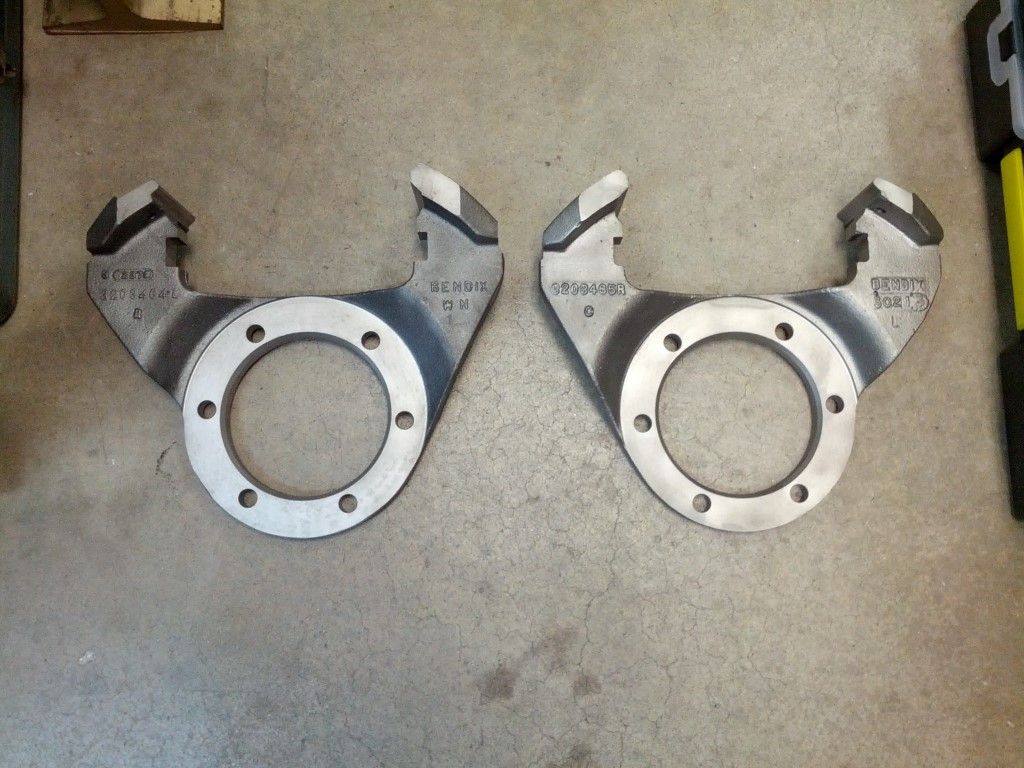
Yep, those are NOS caliper brackets. Not an easy thing to find, but I am really trying to eliminate any known possibilities here.
Another thing I decide to try is installing the rotor dust shields. I've heard the main reason the cool kids remove them to prevent rocks from getting caught between the dust shield and the rotor. While a viable possibility, I have never had it happen on any other vehicle I've driven on dirt, so that reason is out for me at this point, but looking at my situation from a different angle the shields can help a different situation--quenching/thermal shock from water. When running in the desert, the brakes run warm/hot and a small stream crossing or puddle will throw cold/cool water onto a hot rotor. Obviously the dust shields are not water tight, but they will keep small amounts of water from directly contacting the hot rotor. Will it solve the problem?? Who knows, but I'm going to try it. The only problem now is I have to find dust shields. I'm not exactly sure where these came from, but I think they came from my buddy Russ that does all of my precision machining. I could be wrong, but if I am, I'll still give him credit. I cleaned them up and ended up with dust shields that look like this:
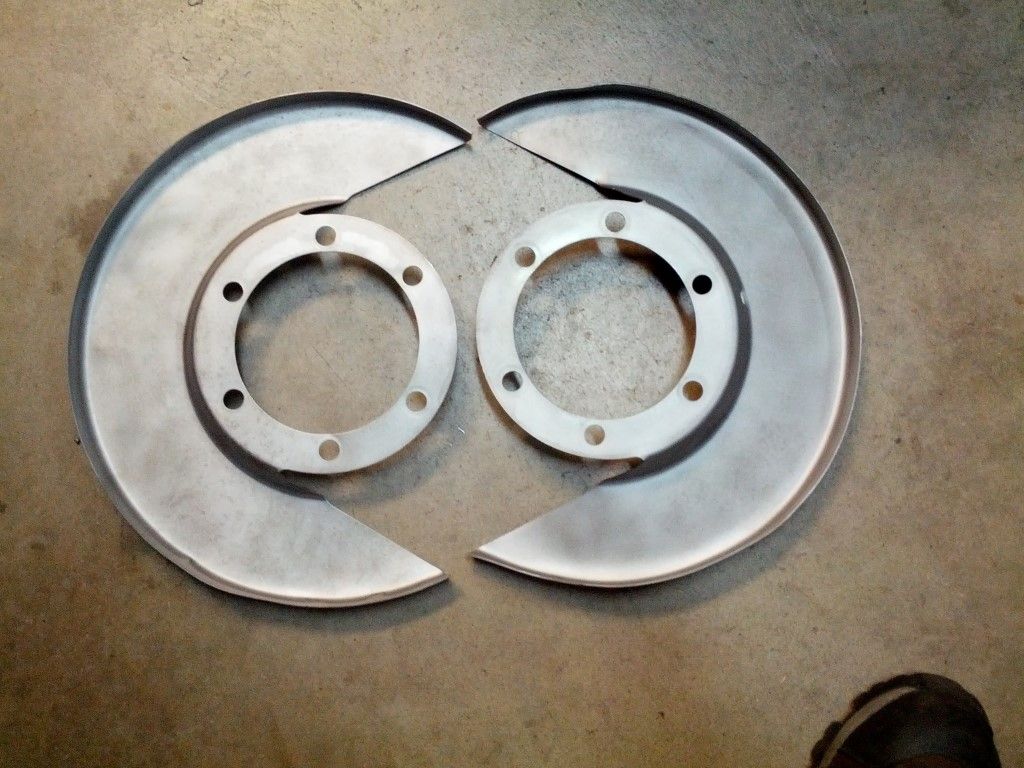
Nice pieces.
Now what?? Well, about the only thing left are the rotors themselves. Ugh, I paid a ton of money for these GM/Budd hub/rotor units that are made in the US, and I really don't want to condemn them, but they have been cut a few times, a couple of those were real deep cuts to get them straight. Are they permanently warped?? Do they have memory?? I don't know. One thing I have done for decades on vehicles that I use in a performance fashion is to machine cooling slots in the rotor faces. I never got into drilling cooling holes in the faces due to potential cracking issues and the fact that the slots have always been enough. Now I have an issue. Do I machine these possibly compromised rotors with cooling slots?? Do I buy new rotors and machine slots into them?? Can I even find domestic rotors anymore?? Well, I started researching rotors that are pre-machined with slots in them already. There are several companies out there that offer them. It seems that none of them use domestic iron for this vehicle application. I finally settle on Street Plus Performance units. They are slotted and drilled rotors. The holes in the face of the rotors are radius chamfered so stress risers are greatly reduced. They also warranty their rotors against cracking. I guess that is as good as I'm going to get, so I throw down another pile of cash for the new rotors:
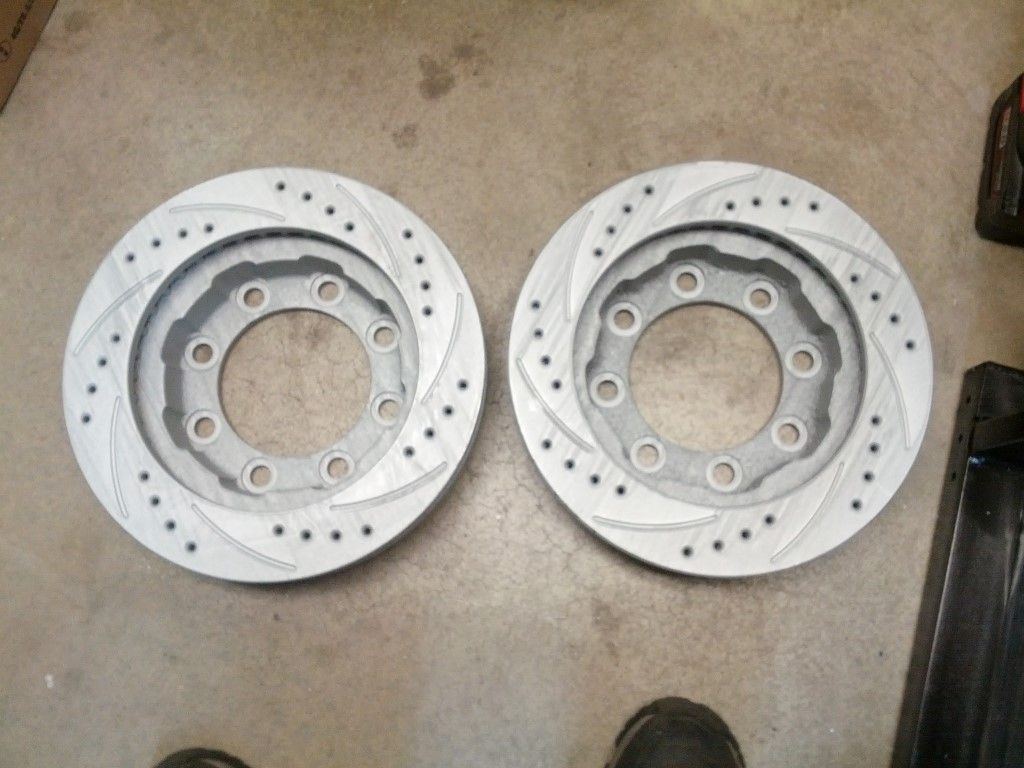
So we're ready to go now, right?? Well, not quite.... I can not bring myself to install all of these new , high dollar parts with the old brake pads. I grab another set of Bendix Fleet/Metlock pads and start inspecting them for issues. One thing I did not like was the way the end nub, that locates the pad in my brand new caliper brackets, is shaped. I decided to square up the end of the pad and then polish the end of the nub so no additional drag would occur in that area.
The picture is not so great, but the pad on the left is the one that got squared up and polished:

A different angle that shows the end a little better:
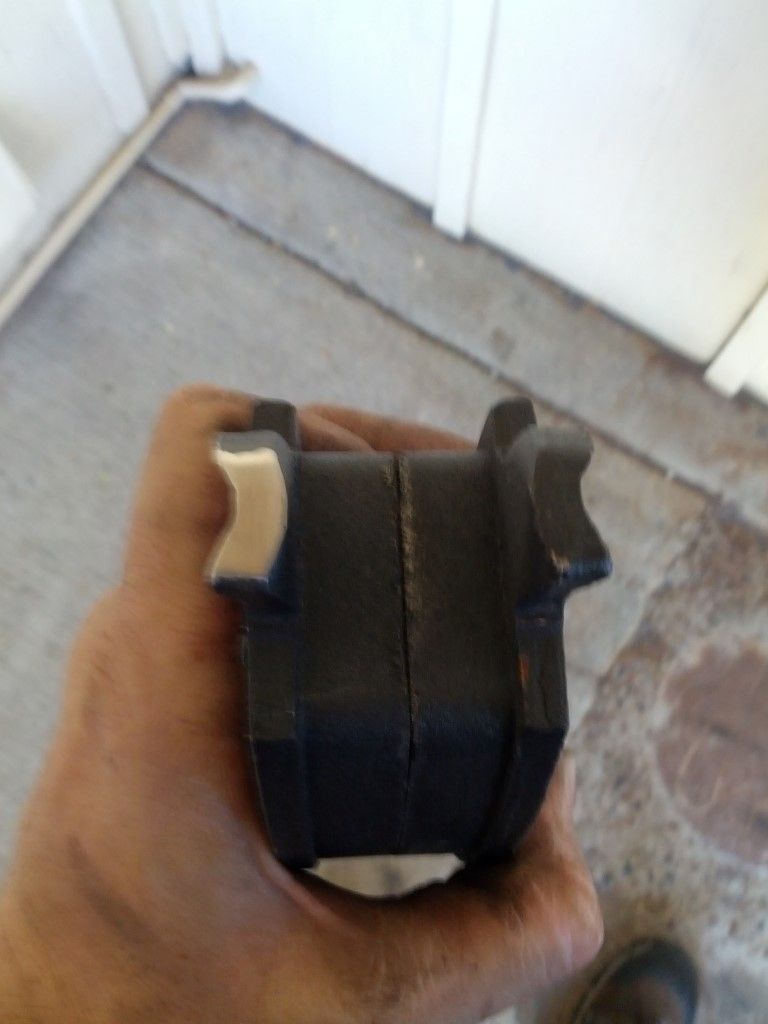
So I added it all together and threw it at the vehicle and this is what I came up with:
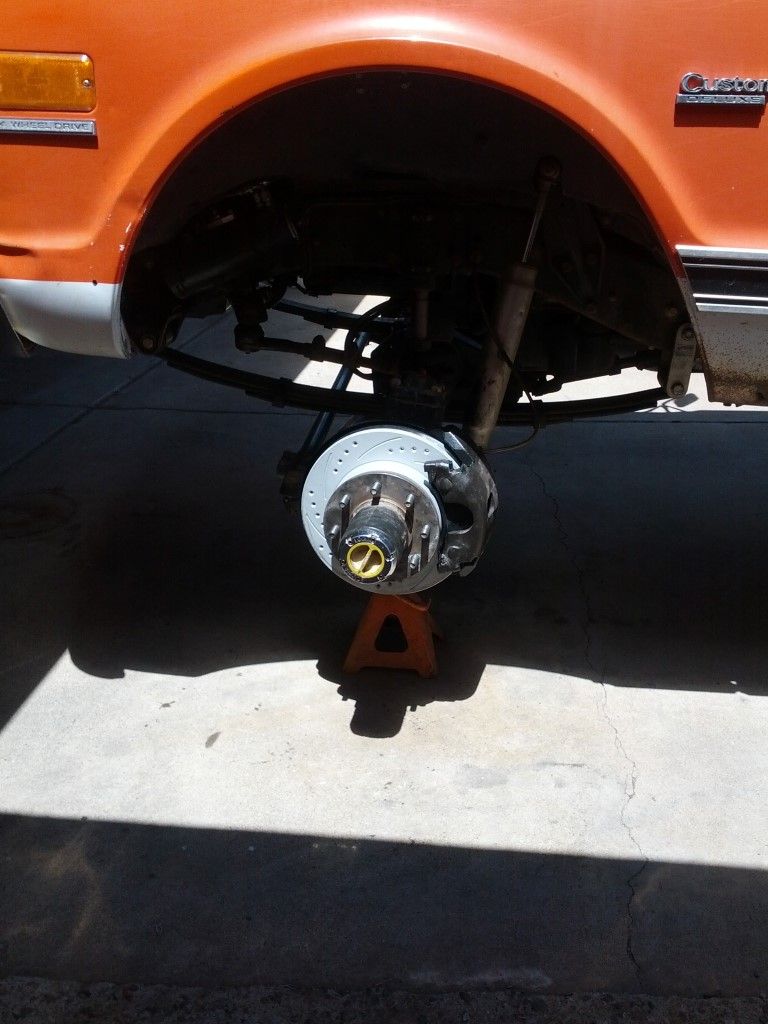
Looks like every other time, except the rotor is drilled and slotted now. So, does it work?? I'd say the jury is still out, but so far, so good. The parts have been in there for about a year and a half now and have no indication of being warped at all. When I hubbed the rotors I measured the runout and it was a bit more than I wanted (I don't recall what the reading was, just that it was more than I wanted), but it has not been an issue at all. The braking performance seems about the same as it was before, but without the warpage it is so nice to drive. It has been on several trips since installation as well as two of our long summer trips with no problems so far. So hopefully, the problem is finally solved, but if not, I have at least had a couple years of no warpage. At this point I call it a win.